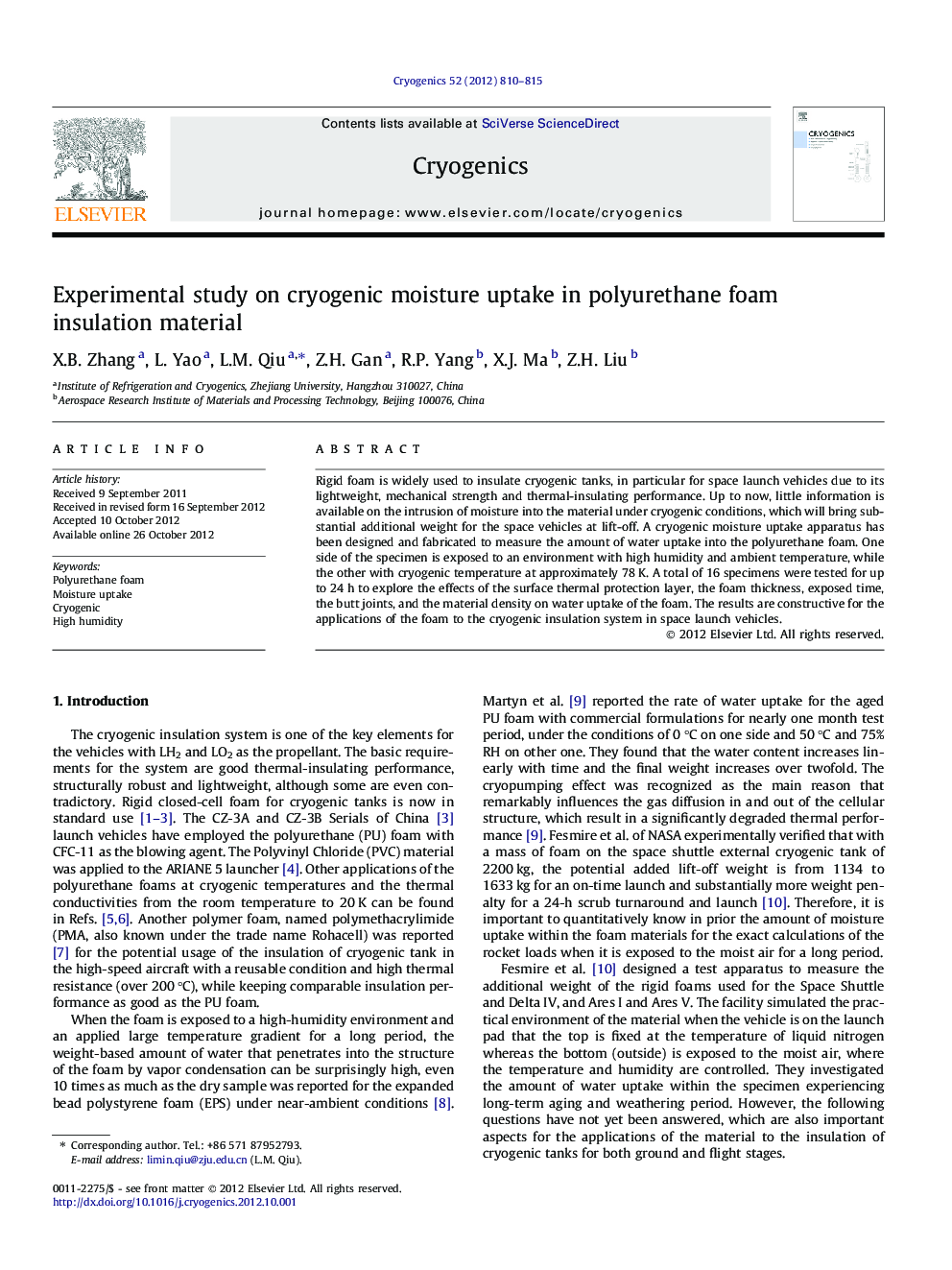| Article ID | Journal | Published Year | Pages | File Type |
|---|---|---|---|---|
| 1507754 | Cryogenics | 2012 | 6 Pages |
Rigid foam is widely used to insulate cryogenic tanks, in particular for space launch vehicles due to its lightweight, mechanical strength and thermal-insulating performance. Up to now, little information is available on the intrusion of moisture into the material under cryogenic conditions, which will bring substantial additional weight for the space vehicles at lift-off. A cryogenic moisture uptake apparatus has been designed and fabricated to measure the amount of water uptake into the polyurethane foam. One side of the specimen is exposed to an environment with high humidity and ambient temperature, while the other with cryogenic temperature at approximately 78 K. A total of 16 specimens were tested for up to 24 h to explore the effects of the surface thermal protection layer, the foam thickness, exposed time, the butt joints, and the material density on water uptake of the foam. The results are constructive for the applications of the foam to the cryogenic insulation system in space launch vehicles.
► We designed an experimental device to measure the additional moisture weight of insulation foam. ► The surface thermal protection layer can effectively decrease the additional weight. ► The butt joint will incur a significant increase of the additional weight. ► Increase of the foam thickness will decrease the additional weight.
